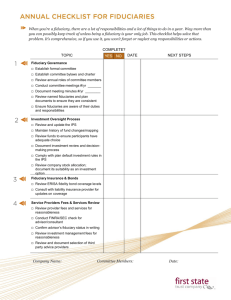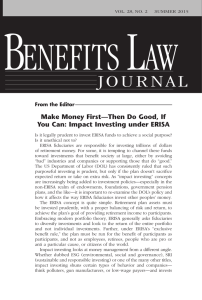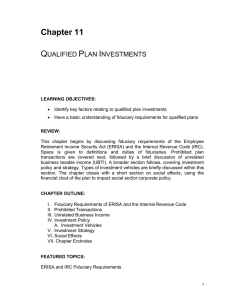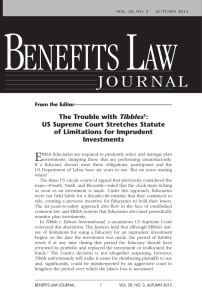Federal Register/Vol. 80, No. 206/Monday, October 26, 2015/Rules
advertisement
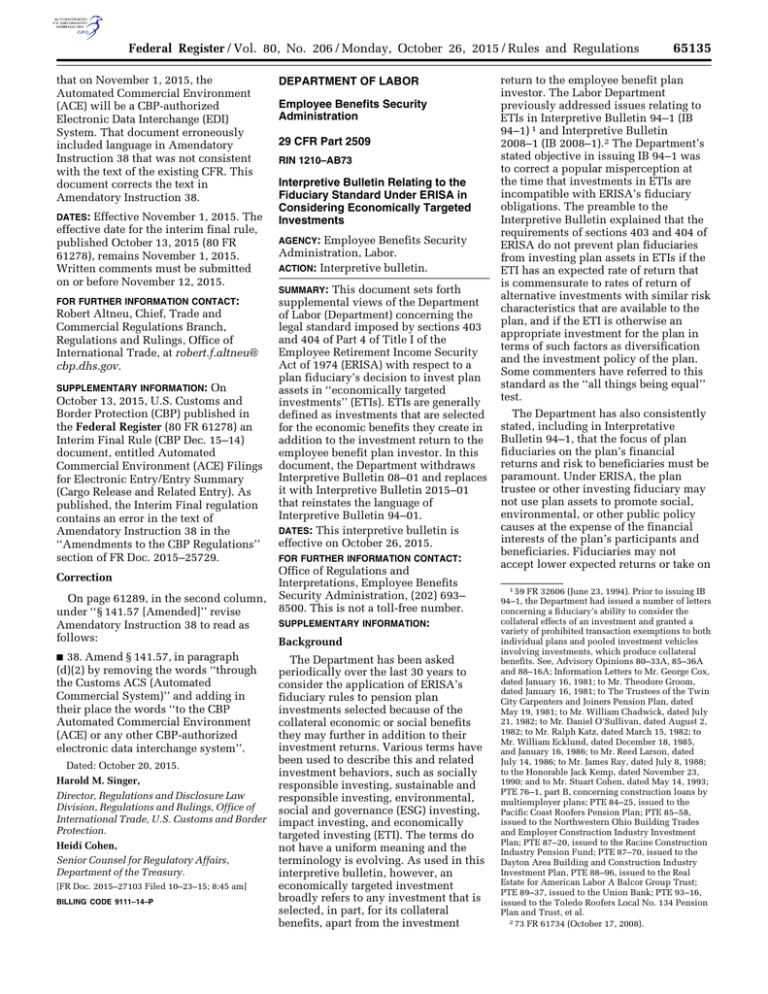
Federal Register / Vol. 80, No. 206 / Monday, October 26, 2015 / Rules and Regulations that on November 1, 2015, the Automated Commercial Environment (ACE) will be a CBP-authorized Electronic Data Interchange (EDI) System. That document erroneously included language in Amendatory Instruction 38 that was not consistent with the text of the existing CFR. This document corrects the text in Amendatory Instruction 38. Effective November 1, 2015. The effective date for the interim final rule, published October 13, 2015 (80 FR 61278), remains November 1, 2015. Written comments must be submitted on or before November 12, 2015. DATES: FOR FURTHER INFORMATION CONTACT: Robert Altneu, Chief, Trade and Commercial Regulations Branch, Regulations and Rulings, Office of International Trade, at robert.f.altneu@ cbp.dhs.gov. On October 13, 2015, U.S. Customs and Border Protection (CBP) published in the Federal Register (80 FR 61278) an Interim Final Rule (CBP Dec. 15–14) document, entitled Automated Commercial Environment (ACE) Filings for Electronic Entry/Entry Summary (Cargo Release and Related Entry). As published, the Interim Final regulation contains an error in the text of Amendatory Instruction 38 in the ‘‘Amendments to the CBP Regulations’’ section of FR Doc. 2015–25729. SUPPLEMENTARY INFORMATION: Correction On page 61289, in the second column, under ‘‘§ 141.57 [Amended]’’ revise Amendatory Instruction 38 to read as follows: 38. Amend § 141.57, in paragraph (d)(2) by removing the words ‘‘through the Customs ACS (Automated Commercial System)’’ and adding in their place the words ‘‘to the CBP Automated Commercial Environment (ACE) or any other CBP-authorized electronic data interchange system’’. asabaliauskas on DSK5VPTVN1PROD with RULES ■ Dated: October 20, 2015. Harold M. Singer, Director, Regulations and Disclosure Law Division, Regulations and Rulings, Office of International Trade, U.S. Customs and Border Protection. Heidi Cohen, Senior Counsel for Regulatory Affairs, Department of the Treasury. [FR Doc. 2015–27103 Filed 10–23–15; 8:45 am] BILLING CODE 9111–14–P VerDate Sep<11>2014 17:27 Oct 23, 2015 Jkt 238001 DEPARTMENT OF LABOR Employee Benefits Security Administration 29 CFR Part 2509 RIN 1210–AB73 Interpretive Bulletin Relating to the Fiduciary Standard Under ERISA in Considering Economically Targeted Investments Employee Benefits Security Administration, Labor. ACTION: Interpretive bulletin. AGENCY: This document sets forth supplemental views of the Department of Labor (Department) concerning the legal standard imposed by sections 403 and 404 of Part 4 of Title I of the Employee Retirement Income Security Act of 1974 (ERISA) with respect to a plan fiduciary’s decision to invest plan assets in ‘‘economically targeted investments’’ (ETIs). ETIs are generally defined as investments that are selected for the economic benefits they create in addition to the investment return to the employee benefit plan investor. In this document, the Department withdraws Interpretive Bulletin 08–01 and replaces it with Interpretive Bulletin 2015–01 that reinstates the language of Interpretive Bulletin 94–01. DATES: This interpretive bulletin is effective on October 26, 2015. FOR FURTHER INFORMATION CONTACT: Office of Regulations and Interpretations, Employee Benefits Security Administration, (202) 693– 8500. This is not a toll-free number. SUPPLEMENTARY INFORMATION: SUMMARY: Background The Department has been asked periodically over the last 30 years to consider the application of ERISA’s fiduciary rules to pension plan investments selected because of the collateral economic or social benefits they may further in addition to their investment returns. Various terms have been used to describe this and related investment behaviors, such as socially responsible investing, sustainable and responsible investing, environmental, social and governance (ESG) investing, impact investing, and economically targeted investing (ETI). The terms do not have a uniform meaning and the terminology is evolving. As used in this interpretive bulletin, however, an economically targeted investment broadly refers to any investment that is selected, in part, for its collateral benefits, apart from the investment PO 00000 Frm 00015 Fmt 4700 Sfmt 4700 65135 return to the employee benefit plan investor. The Labor Department previously addressed issues relating to ETIs in Interpretive Bulletin 94–1 (IB 94–1) 1 and Interpretive Bulletin 2008–1 (IB 2008–1).2 The Department’s stated objective in issuing IB 94–1 was to correct a popular misperception at the time that investments in ETIs are incompatible with ERISA’s fiduciary obligations. The preamble to the Interpretive Bulletin explained that the requirements of sections 403 and 404 of ERISA do not prevent plan fiduciaries from investing plan assets in ETIs if the ETI has an expected rate of return that is commensurate to rates of return of alternative investments with similar risk characteristics that are available to the plan, and if the ETI is otherwise an appropriate investment for the plan in terms of such factors as diversification and the investment policy of the plan. Some commenters have referred to this standard as the ‘‘all things being equal’’ test. The Department has also consistently stated, including in Interpretative Bulletin 94–1, that the focus of plan fiduciaries on the plan’s financial returns and risk to beneficiaries must be paramount. Under ERISA, the plan trustee or other investing fiduciary may not use plan assets to promote social, environmental, or other public policy causes at the expense of the financial interests of the plan’s participants and beneficiaries. Fiduciaries may not accept lower expected returns or take on 1 59 FR 32606 (June 23, 1994). Prior to issuing IB 94–1, the Department had issued a number of letters concerning a fiduciary’s ability to consider the collateral effects of an investment and granted a variety of prohibited transaction exemptions to both individual plans and pooled investment vehicles involving investments, which produce collateral benefits. See, Advisory Opinions 80–33A, 85–36A and 88–16A; Information Letters to Mr. George Cox, dated January 16, 1981; to Mr. Theodore Groom, dated January 16, 1981; to The Trustees of the Twin City Carpenters and Joiners Pension Plan, dated May 19, 1981; to Mr. William Chadwick, dated July 21, 1982; to Mr. Daniel O’Sullivan, dated August 2, 1982; to Mr. Ralph Katz, dated March 15, 1982; to Mr. William Ecklund, dated December 18, 1985, and January 16, 1986; to Mr. Reed Larson, dated July 14, 1986; to Mr. James Ray, dated July 8, 1988; to the Honorable Jack Kemp, dated November 23, 1990; and to Mr. Stuart Cohen, dated May 14, 1993; PTE 76–1, part B, concerning construction loans by multiemployer plans; PTE 84–25, issued to the Pacific Coast Roofers Pension Plan; PTE 85–58, issued to the Northwestern Ohio Building Trades and Employer Construction Industry Investment Plan; PTE 87–20, issued to the Racine Construction Industry Pension Fund; PTE 87–70, issued to the Dayton Area Building and Construction Industry Investment Plan, PTE 88–96, issued to the Real Estate for American Labor A Balcor Group Trust; PTE 89–37, issued to the Union Bank; PTE 93–16, issued to the Toledo Roofers Local No. 134 Pension Plan and Trust, et al. 2 73 FR 61734 (October 17, 2008). E:\FR\FM\26OCR1.SGM 26OCR1 65136 Federal Register / Vol. 80, No. 206 / Monday, October 26, 2015 / Rules and Regulations greater risks in order to secure collateral benefits. Specifically, the Department stated in Interpretive Bulletin 94–1: 3 Sections 403 and 404 of the Employee Retirement Income Security Act of 1974 (ERISA), in part, require that a fiduciary of a plan act prudently, and to diversify plan investments so as to minimize the risk of large losses, unless under the circumstances it is clearly prudent not to do so. In addition, these sections require that a fiduciary act solely in the interest of the plan’s participants and beneficiaries and for the exclusive purpose of providing benefits to their participants and beneficiaries. The Department has construed the requirements that a fiduciary act solely in the interest of, and for the exclusive purpose of providing benefits to, participants and beneficiaries as prohibiting a fiduciary from subordinating the interests of participants and beneficiaries in their retirement income to unrelated objectives. The Department continued in Interpretative Bulletin 2008–1: 4 ERISA’s plain text thus establishes a clear rule that in the course of discharging their duties, fiduciaries may never subordinate the economic interests of the plan [participants and beneficiaries] to unrelated objectives [ ]. In the preamble to IB 94–1, the Department elaborated: 5 asabaliauskas on DSK5VPTVN1PROD with RULES While the Department has stated that a plan fiduciary may consider collateral benefits in choosing between investments that have comparable risks and rates of return, it has consistently held that fiduciaries who are willing to accept expected reduced returns or greater risks to secure collateral benefits are in violation of ERISA. It follows that, because every investment necessarily causes a plan to forgo other investment opportunities, an investment will not be prudent if it would provide a plan with a lower expected rate of return than available alternative investments with commensurate degrees of risk or is riskier than alternative available investments with commensurate rates of return. Thus, it has been the Department’s consistent view that sections 403 and 404 of ERISA do not permit fiduciaries to sacrifice the economic interests of plan participants in receiving their promised benefits in order to promote collateral goals. At the same time, however, the Department has consistently recognized that fiduciaries may consider such collateral goals as tie-breakers when choosing between investment alternatives that are otherwise equal with respect to return and risk over the appropriate time horizon. ERISA does not direct an investment choice in circumstances where investment 3 59 FR 32606, 07. FR 61734, 35. 5 59 FR 32606, 07 (footnote omitted). 4 73 VerDate Sep<11>2014 17:27 Oct 23, 2015 Jkt 238001 alternatives are equivalent, and the economic interests of the plan’s participants and beneficiaries are protected if the selected investment is in fact, economically equivalent to competing investments. On October 17, 2008, the Department replaced Interpretive Bulletin 94–1, with Interpretive Bulletin 2008–01, codified at 29 CFR 2509.08–01. IB 2008– 01 purported not to alter the basic legal principles set forth in IB 94–1. Its stated purpose was to clarify that fiduciary consideration of collateral, noneconomic factors in selecting plan investments should be rare and, when considered, should be documented in a manner that demonstrates compliance with ERISA’s rigorous fiduciary standards. The Department believes that in the seven years since its publication, IB 2008–01 has unduly discouraged fiduciaries from considering ETIs and ESG factors. In particular, the Department is concerned that the 2008 guidance may be dissuading fiduciaries from (1) pursuing investment strategies that consider environmental, social, and governance factors, even where they are used solely to evaluate the economic benefits of investments and identify economically superior investments, and (2) investing in ETIs even where economically equivalent. Some fiduciaries believe the 2008 guidance sets a higher but unclear standard of compliance for fiduciaries when they are considering ESG factors or ETI investments. An important purpose of this Interpretive Bulletin is to clarify that plan fiduciaries should appropriately consider factors that potentially influence risk and return. Environmental, social, and governance issues may have a direct relationship to the economic value of the plan’s investment. In these instances, such issues are not merely collateral considerations or tie-breakers, but rather are proper components of the fiduciary’s primary analysis of the economic merits of competing investment choices. Similarly, if a fiduciary prudently determines that an investment is appropriate based solely on economic considerations, including those that may derive from environmental, social and governance factors, the fiduciary may make the investment without regard to any collateral benefits the investment may also promote. Fiduciaries need not treat commercially reasonable investments as inherently suspect or in need of special scrutiny merely because they take into consideration environmental, social, or other such factors. When a fiduciary PO 00000 Frm 00016 Fmt 4700 Sfmt 4700 prudently concludes that such an investment is justified based solely on the economic merits of the investment, there is no need to evaluate collateral goals as tie-breakers. In addition, this Interpretive Bulletin also clarifies that plan fiduciaries may invest in ETIs based, in part, on their collateral benefits so long as the investment is economically equivalent, with respect to return and risk to beneficiaries in the appropriate time horizon, to investments without such collateral benefits. In an effort to correct the misperceptions that have followed publication of IB 2008–01 the Department is withdrawing IB 2008–01, replacing it with this guidance that reinstates the language of IB 94–1. Consistent with fiduciaries’ obligations to choose economically superior investments, the Department does not believe ERISA prohibits a fiduciary from addressing ETIs or incorporating ESG factors in investment policy statements or integrating ESGrelated tools, metrics and analyses to evaluate an investment’s risk or return or choose among otherwise equivalent investments. Nor do sections 403 and 404 prevent fiduciaries from considering whether and how potential investment managers consider ETIs or use ESG criteria in their investment practices. As in selecting investments, in selecting investment managers, the plan fiduciaries must reasonably conclude that the investment manager’s practices in selecting investments are consistent with the principles articulated in this guidance. In addition, the Department does not construe consideration of ETIs or ESG criteria as presumptively requiring additional documentation or evaluation beyond that required by fiduciary standards applicable to plan investments generally. As a general matter, the Department believes that fiduciaries responsible for investing plan assets should maintain records sufficient to demonstrate compliance with ERISA’s fiduciary provisions. As with any other investments, the appropriate level of documentation would depend on the facts and circumstances. The Department also has concluded that the same standards set forth in sections 403 and 404 of ERISA governing a fiduciary’s investment decisions, discussed above, apply to a fiduciary’s selection of a ‘‘sociallyresponsible’’ mutual fund as a plan investment or, in the case of an ERISA section 404(c) plan or other individual account plan, a designated investment alternative under the plan. Specifically, in Advisory Opinion 98–04A, the E:\FR\FM\26OCR1.SGM 26OCR1 Federal Register / Vol. 80, No. 206 / Monday, October 26, 2015 / Rules and Regulations Department has expressed the view that the fiduciary standards of sections 403 and 404 do not preclude consideration of collateral benefits, such as those offered by a ‘‘socially-responsible’’ fund, in a fiduciary’s decision to designate an investment alternative in an individual account plan. Whether a particular fund or investment alternative satisfies the requirements set forth in sections 403 and 404 of ERISA is an inherently factual question that the appropriate plan fiduciaries must decide based on all the facts and circumstances of the individual situation. The following Interpretive Bulletin deals solely with the applicability of the prudence and exclusive purpose requirements of ERISA as applied to fiduciary decisions to invest plan assets in ETIs, and in particular the collateral benefits they may provide apart from a plan’s performance and the interests of participants and beneficiaries in their retirement income. The bulletin does not supersede the regulatory standard contained at 29 CFR 2550.404a-1, nor does it address any issues which may arise in connection with the prohibited transaction provisions or the statutory exemptions from those provisions. List of Subjects in 29 CFR Part 2509 Employee benefit plans, Pensions. For the reasons set forth in the preamble, the Department is amending subchapter A, part 2509 of title 29 of the Code of Federal Regulations as follows: SUBCHAPTER A—GENERAL PART 2509—INTERPRETIVE BULLETINS RELATING TO THE EMPLOYEE RETIREMENT INCOME SECURITY ACT OF 1974 1. The authority citation for part 2509 continues to read as follows: ■ Authority: 29 U.S.C. 1135. Secretary of Labor’s Order 1–2003, 68 FR 5374 (Feb. 3, 2003). Sections 2509.75–10 and 2509.75–2 issued under 29 U.S.C. 1052, 1053, 1054. Sec. 2509.75–5 also issued under 29 U.S.C. 1002. Sec. 2509.95–1 also issued under sec. 625, Public Law 109–280, 120 Stat. 780. § 2509.08–1 [Removed] 2. Part 2509 is amended by removing § 2509.08–1. ■ 3. Part 2509 is further amended by adding § 2509.2015–01 to read as follows: asabaliauskas on DSK5VPTVN1PROD with RULES ■ § 2509.2015–01 Interpretive bulletin relating to the fiduciary standard under ERISA in considering economically targeted investments. This Interpretive Bulletin sets forth the Department of Labor’s interpretation of sections 403 and 404 of the Employee VerDate Sep<11>2014 17:27 Oct 23, 2015 Jkt 238001 Retirement Income Security Act of 1974 (ERISA), as applied to employee benefit plan investments in ‘‘economically targeted investments’’ (ETIs), that is, investments selected for the economic benefits they create apart from their investment return to the employee benefit plan. Sections 403 and 404, in part, require that a fiduciary of a plan act prudently, and to diversify plan investments so as to minimize the risk of large losses, unless under the circumstances it is clearly prudent not to do so. In addition, these sections require that a fiduciary act solely in the interest of the plan’s participants and beneficiaries and for the exclusive purpose of providing benefits to their participants and beneficiaries. The Department has construed the requirements that a fiduciary act solely in the interest of, and for the exclusive purpose of providing benefits to, participants and beneficiaries as prohibiting a fiduciary from subordinating the interests of participants and beneficiaries in their retirement income to unrelated objectives. With regard to investing plan assets, the Department has issued a regulation, at 29 CFR 2550.404a–1, interpreting the prudence requirements of ERISA as they apply to the investment duties of fiduciaries of employee benefit plans. The regulation provides that the prudence requirements of section 404(a)(1)(B) are satisfied if (1) the fiduciary making an investment or engaging in an investment course of action has given appropriate consideration to those facts and circumstances that, given the scope of the fiduciary’s investment duties, the fiduciary knows or should know are relevant, and (2) the fiduciary acts accordingly. This includes giving appropriate consideration to the role that the investment or investment course of action plays (in terms of such factors as diversification, liquidity, and risk/return characteristics) with respect to that portion of the plan’s investment portfolio within the scope of the fiduciary’s responsibility. Other facts and circumstances relevant to an investment or investment course of action would, in the view of the Department, include consideration of the expected return on alternative investments with similar risks available to the plan. It follows that, because every investment necessarily causes a plan to forgo other investment opportunities, an investment will not be prudent if it would be expected to provide a plan with a lower rate of return than available alternative investments with commensurate degrees PO 00000 Frm 00017 Fmt 4700 Sfmt 4700 65137 of risk or is riskier than alternative available investments with commensurate rates of return. The fiduciary standards applicable to ETIs are no different than the standards applicable to plan investments generally. Therefore, if the above requirements are met, the selection of an ETI, or the engaging in an investment course of action intended to result in the selection of ETIs, will not violate section 404(a)(1)(A) and (B) and the exclusive purpose requirements of section 403. Phyllis C. Borzi, Assistant Secretary, Employee Benefits Security Administration, U.S. Department of Labor. [FR Doc. 2015–27146 Filed 10–22–15; 11:15 am] BILLING CODE 4510–29–P DEPARTMENT OF HOMELAND SECURITY Coast Guard 33 CFR Part 117 [USCG–2015–0964] Drawbridge Operation Regulations; Tchefuncta River, Madisonville, LA Coast Guard, DHS. Notice of deviation from regulations. AGENCY: ACTION: The Coast Guard has issued a temporary deviation from the operating schedule that governs the SR 22 Bridge over the Tchefuncta River, mile 2.5, at Madisonville, St. Tammany Parish, Louisiana. This deviation is necessary to complete scheduled maintenance of the bridge. This deviation allows the bridge to remain closed to navigation for approximately six weeks while allowing for two scheduled openings on scheduled work days except for a fiveday period and a 36-hour period, both in December, when there will be complete closures. The bridge will operate normally on non-scheduled work days and on weekends. DATES: This deviation is effective from 7 a.m. on November 2, 2015 until 7 p.m. on December 15, 2015. ADDRESSES: The docket for this deviation, [USCG–2015–0964] is available at http://www.regulations.gov. FOR FURTHER INFORMATION CONTACT: If you have questions on this temporary deviation, call or email Jim Wetherington, D8 Bridge Administration Branch, Coast Guard; telephone 504–671–2128, email james.r.wetherington@uscg.mil. SUMMARY: E:\FR\FM\26OCR1.SGM 26OCR1

